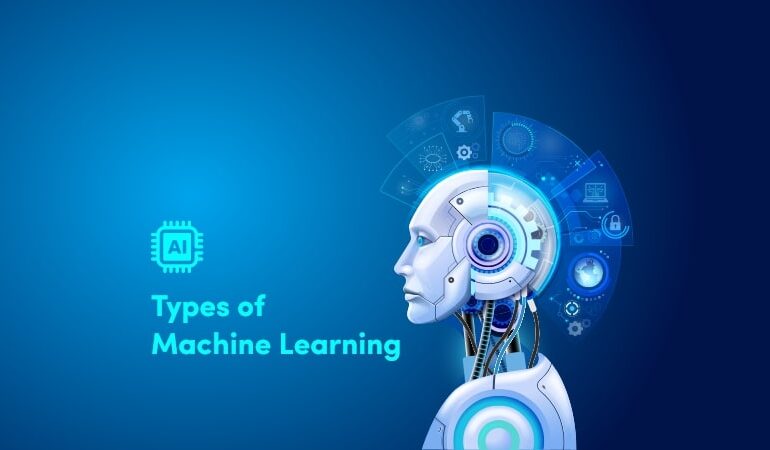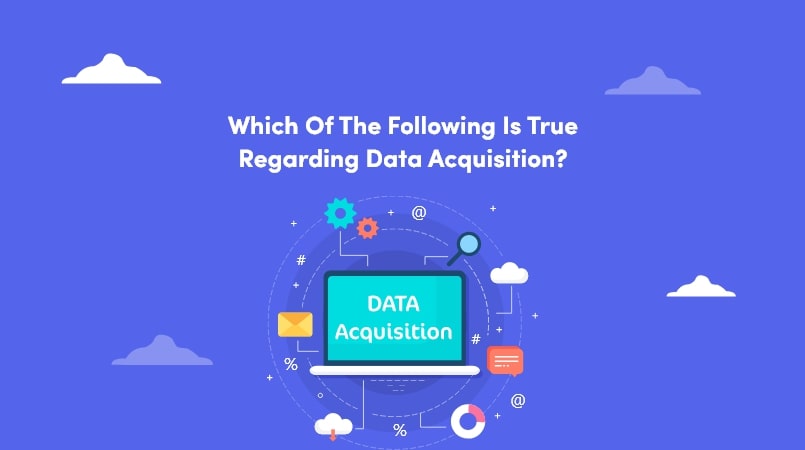
Types of Machine Learning You Should Know
Machine Learning (ML) teaches machines to learn from data and improve gradually without being clearly programmed.
One of the technological advances in recent decades that has changed the game the most is machine learning (ML).
Nowadays, machine Learning (ML) is so widespread that it has become the go-to way for corporations to resolve difficult problems.
Its usage is widely suitable across many industries. It is mainly the mainstream type of artificial intelligence (AI) technology that is being used around the globe.
Machine learning helps develop popular tools used in various companies, from detecting fraud in banking and insurance to predicting upcoming trends and helping smart devices quickly process human conversations through natural language processing.
Now further on we will discuss in detail the types of Machine Learning there are.
What Is Machine Learning?
Machine learning (ML) is a branch of artificial intelligence (AI) that uses programs trained on data sets to create self-learning models.
These self-learning models can predict outcomes and classify information without human interference.
Various types of machine learning are widely used for commercial purposes, for example, suggesting products to consumers based on their past purchases or the products they have been eyeing for a long time, predicting stock market fluctuations, and translating texts from one language to another.
While machine learning are highly powerful tools for resolving issues and problems, improving business operations, and automating tasks, they can also be quite complex and challenging technologies, requiring in-depth knowledge and the necessary resources.
It may be difficult to find the right algorithm for a task, as it requires a strong grasp of mathematics and statistics.
A large amount of good quality data is a significant part of training for different types of machine learning, as it helps to produce accurate results.
One more part that may be frustrating is that the results themselves can be a hurdle to understand.
You may be wondering, How can ML be any different from traditional programming? In traditional programming, we feed input data from a well-written program into a machine to generate output.
However, in machine learning, we input data along with the output; both are fed into the machine during the learning phase, and it creates a program for itself.
Applications of Machine Learning
Machine learning is now the latest buzzword that is sweeping across the entire globe’s business. It has captured the popular imagination, gathering up visions of futuristic self-learning AI.
In many industries, various types of machine learning have paved their way and have been heading towards technological accomplishments and tools.
Looking back a few years, it wouldn’t even be possible to think of such advanced technology, from online television streaming to forecasting engines that power the transformation that supports our modern lifestyle.
Corporations are using different types of machine learning to better understand and improve business decisions, increase productivity in large amounts, forecast weather, and be able to do way more new things.
With the rapid growth of AI technology, it is necessary to work with better tools to understand the data we currently have as well as the one we will have in the future.
The best way to do that is through the innovation of intelligent machines.
As they all say, the more, the merrier. The more machines we have, the more we will be able to understand data.
Let’s explore further the real-world machine learning applications that are trending around the globe.
Popular Machine Learning Applications and Examples.
- Image Recognition
- Recommender System
- Speech Recognition
- Self Driving Cars
- Fraud Detection
Image Recognition
The task, which started off with classifications between dog and cat images, has now fully evolved up to the level of Face recognition and real-world use cases based on, for example, employee attendance tracking.
Image recognition has also helped revolutionize the healthcare industry by employing smart systems in disease recognition and diagnosis methodologies.
Recommender system
As the digitalization of our world grows daily, every tech freak tries to provide customized services to its users.
The recommender system can thoroughly analyze a user’s preference based on the user’s research history, and the system can recommend content or services to them.
Youtube can be used as a well-known example; it recommends new videos according to the user’s previous watch history and research history.
Netflix also recommends movies based on the user’s past or recently watched movies as well as series from the beginning.
Speech recognition
Speech recognition is a smart system like Siri on your iOS devices or Alexa. Both have been used widely and are common amongst others. Systems like these are usually based on speech recognition systems. This system is able to convert voice into texts
Self Driving Cars
Driving a car without a driver has now become a reality, and thanks to machine learning and deep learning, it is now possible.
The most common example of self driving cars are Tesla cars, which have been thoroughly tested and proven successful in becoming autonomous driving cars.
Fraud detection
The digitalization of fraudulent transactions and fraudulent activities has increased rapidly.
Unfortunately, identifying them is a challenging task. This is where machine learning comes in handy.
Whenever the system detects any suspicious user activity, a suitable notification is provided to the administrator to monitor these cases properly without wasting any precious time.
4 Types of Machine Learning
There are four types of machine learning. Practitioners often refer to these four main machine learning types according to their suitability for the processes used to set up the data.
- Supervised learning
- Unsupervised learning
- Semi-supervised learning
- Reinforcement learning
1) Supervised Learning
Supervised learning is a type of machine learning that involves training a machine and its algorithm using labeled training data. It requires an important amount of human guidance.
Supervised learning is one of the most popular forms of machine learning, and it can train models to accomplish tasks in classification, regression, or forecasting.
In order to work, this type requires an extreme amount of human guidance because of its use of labeled data sets. This data is divided into features (the input data) and labels (the output data)
The labeled input and output data are constantly fed into different systems trained by humans. Supervised learning serves as an umbrella for specific algorithms as well as statistical methods.
Now, let’s jump into a few examples of supervised learning.
Supervised Learning Examples
Supervised learning algorithms are mostly used in either categorizing data against a model or predicting continuous outcomes of data in the future. For example, the algorithms are trained to identify and categorize objects using training data.
The system then understands the connection between data points from the training data. Once established, new data can be fed into the model so that it can be classified.
The second most well-known usage is in predicting continuous outcomes, patterns that a model is trained to identify, and trends in a training dataset; it can also apply to new live data once established.
Supervised Machine Learning Programs Can Be Used In:
- Classifying new data into established groups as well as categories
- Forecast occurring events and trends in the future based on the predictive models
- Helping businesses with different campaigns and obtaining projects by predicting changes in value.
- Price prediction models, project market sales, and stock trading future outcomes.
- Marketing as well as advertising a variety of campaign plans, forecasting the value of prospective ad space.
2) Unsupervised Learning
Unsupervised learning involves training the model on an unlabeled dataset. The model has the ability to find patterns and relationships in the data on its own.
This data type is used for both clustering and dimensionality reduction, which we will detail in the unsupervised learning examples.
In an unsupervised learning process, the machine learning program is left to clarify large data sets and address the data accordingly.
The algorithm tries to organize that data so that it can describe its structure. This means grouping the data in clusters or arranging it more efficiently.
Unsupervised Learning Examples
Under the umbrella of unsupervised learning fall:
- Clustering: Clustering involves grouping sets of similar databases based on defined criteria.
It’s useful for dividing data into a variety of groups. It performs analysis on each data set to find patterns.
- Dimension Reduction: Dimension reduction reduces the number of variables being considered to find the exact information required.
3) Semi-Supervised Learning
Semi-supervised learning models indicate processes that use unsupervised learning programs to generate labels for data automatically, which can be consumed by supervised techniques.
Different approaches can be used to apply these labels,which we will talk about in depth in semi supervised learning examples.
Semi-Supervised Learning Examples
- Clustering techniques label data that looks pretty similar to labels generated by humans
- Self supervised learning techniques train programs to solve a pretext task which correctly applies labels
- Multi-instance techniques find ways to generate labels for a collection of examples with a specific type of characteristic.
4) Reinforcement Learning
Reinforcement learning models are mostly used to improve models after they have been positioned.
They can also be used in an interactive training process, such as teaching an algorithm to play games in response to feedback about individual moves.
Reinforcement Learning Examples
The most common reinforcement learning algorithms use various neural networks.
For example, in self driving applications, an algorithm’s training might be based on how it responds to data recorded from cars to synthetic data that represents what the car’s sensors might see at night.
Machine Learning Career Paths
Machine learning is very popular as it reduces a lot of human effort and increases machine performance. Here are some machine learning career paths you can take!
- Machine Learning Engineer
- Data Scientist
- Natural Language Processing (NLP) Scientist
- Business Intelligence
- Human-Centered Machine
FAQ’s
What should I learn for machine learning?
For Machine Learning, you must learn prerequisites and pre-work sections before beginning (ML) to ensure you are prepared to complete all the modules
What skills are required for machine learning?
The essential concept in ML involves statistical analysis as well as mathematical data manipulation.
Which subjects are required for machine learning?
The subjects that are a must for machine learning (ML) include linear algebra, calculus, programming skills, probability, and, at last, statistics.

One of the top blogs about technology is foxsinsights.com, which specializes in producing excellent, engaging, and practical information. We are a team of seasoned writers that enjoy keeping up with the newest advancements and trends in the tech industry. Our goal is to impart genuine, practical information to our workers.












